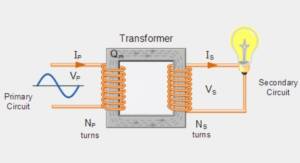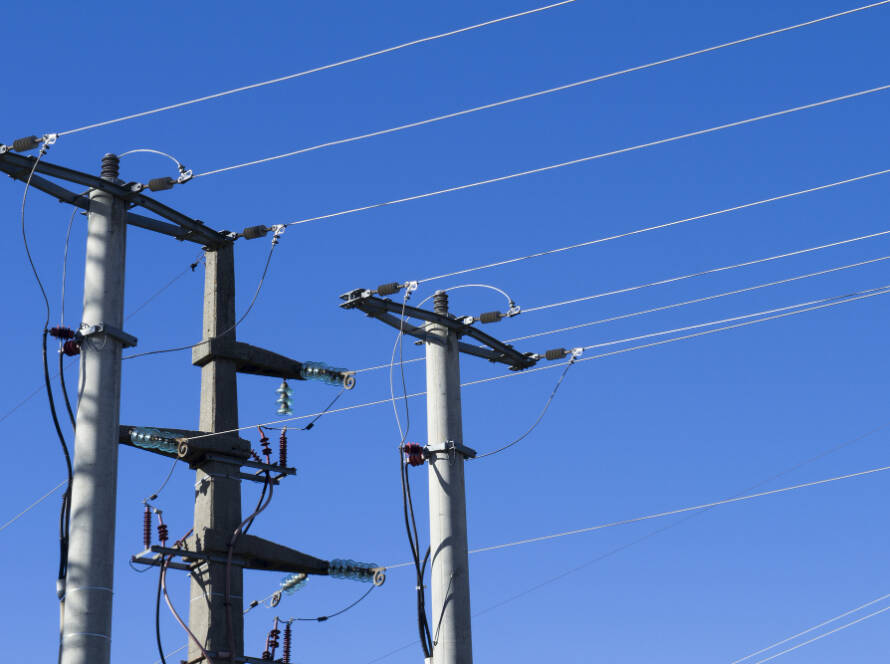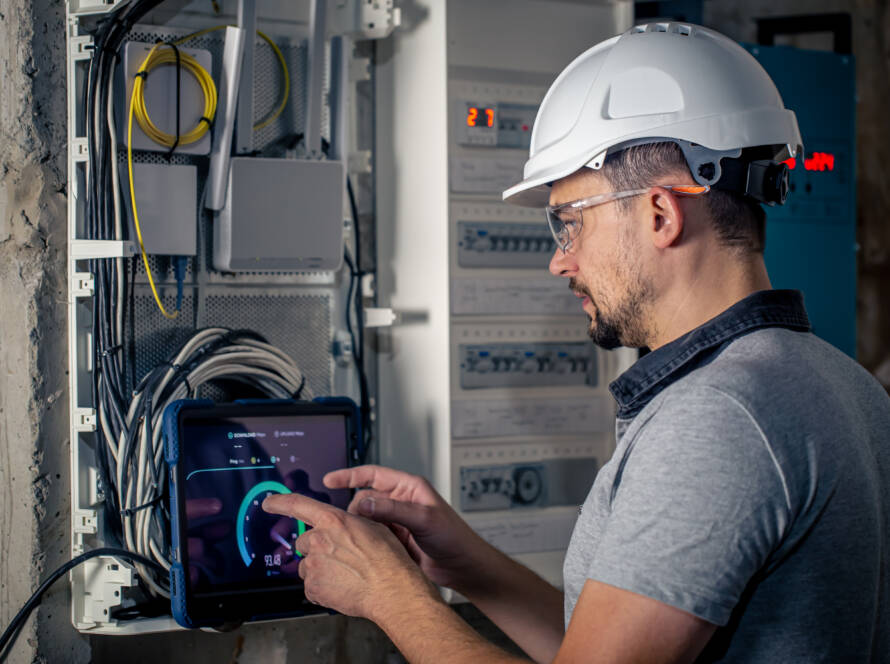You’ve probably seen them around, and you may even know what they do. But do you know how electronic transformers work? Let’s take a closer look.
An electronic transformer is a device that transforms one type of electrical current into another. There are two main types of electronic transformers: step-down and step-up transformers.
Step-down transformers reduce the voltage of an electrical current, while step-up transformers increase it. Both types are used in a variety of applications, from power transmission to electronics.
In this article, we’ll take a closer look at the basics of electronic transformers and their many applications.
What Is an Electronic Transformer?
An electronic transformer is a device used to transform electrical energy from one circuit to another. It usually takes the form of a small metal box with two or more wires coming out of it. One wire is attached to the power source, while the other goes to the device that needs power.
Inside the transformer, there is a coil of wire around a core made of iron or ferrite and the current flows through the wire and creates a magnetic field. This, in turn, creates an electrical current in the other wire.
This current is what powers your device. The strength of the wind can be adjusted by changing the number of coils in the transformer or by adjusting the voltage and current rating of the power supply.
How does an electronic transformer work?
An electronic transformer, also known as an electronic ballast, works by using electronic components to control the current and voltage in a fluorescent lamp or other types of lighting.
The electronic transformer typically contains several key components, including a power rectifier, a high-frequency oscillator, and a power inverter.

The power rectifier converts the incoming AC power into DC power, which is then fed into the high-frequency oscillator. The oscillator generates a high-frequency AC signal, which is fed into the power inverter.
The power inverter converts the high-frequency AC signal into a lower-frequency AC signal that is suitable for driving the lamp. The electronic transformer also includes control circuits that monitor the lamp current and voltage and adjust the output of the inverter accordingly to maintain a constant light output.
The electronic transformer also includes a protection circuit that limits the inrush current of the lamp, this is to protect the lamp from the high current at start-up and also to protect the electronic transformer from damage.
The electronic transformer has advantages over traditional electromagnetic transformers, such as energy efficiency, control of light output, compactness, and low heat dissipation.
Components and Design
An electronic transformer is a device that transforms electric power from one circuit to another, with a primary winding and a secondary winding. It can be used to step up (increase) or step down (decrease) the voltage of an alternating current (AC) voltage. The electronic transformer also has a tertiary winding, which is used as a balancing connection to limit current in the event of an open circuit on either the primary or secondary side.
The electronic transformer is made up of two coils of insulated wire wound around an iron core. The primary coil is connected to the power supply, and the secondary coil is connected to the load.
When current flows through the primary coil, it creates a magnetic field that flows through the iron core and into the secondary coil. This magnetic field induces a voltage in the secondary coil, which is what powers the load.
Types
When it comes to electronic transformers, there are two main types: the step-down transformer and the step-up transformer.
A step-down transformer takes a high voltage and converts it into a lower voltage, while a step-up transformer converts a low voltage into a high voltage. This is why they’re named respectively: because one “steps down” the voltage while the other “steps up” the voltage.
So, let’s dive in and get to know the different types of electronic transformers available. There are three main transformer types: step-up, step-down, and isolation transformers.
Step-up transformers increase the voltage of the electricity supplied to your system. This is great if your device needs extra voltage to operate at maximum efficiency or you want to save energy by running it at minimum power.
Step-down transformers lower the voltage of the electricity supplied to your system. This can be handy if you want to adjust the power output of a device that runs on higher watts or if you’re running a motor or other equipment at lower watts than what is normally used.
Finally, isolation transformers are designed to separate two electrical circuits from each other and prevent any current from passing between them. These are typically used for medical, industrial and consumer applications such as medical beds and ovens.
It’s important to know which type of transformer you need for your project, as using the wrong one can be dangerous and result in product failure.
What is the importance of an electric transformer?
Electric transformers are important for several reasons:
Voltage regulation: Electric transformers are used to step up or step down the voltage level of an alternating current (AC) in order to match the voltage level of the load. This enables efficient and stable transmission and distribution of electricity over long distances.
Power distribution: Electric transformers are widely used to distribute electricity to homes, businesses, and other customers. They are used to transform high-voltage power from transmission lines to lower-voltage power that is suitable for distribution to customers.
Isolation: Electric transformers are used to provide electrical isolation between different parts of a circuit. This can be important for safety reasons, as well as to prevent electrical interference between different circuits.
Load balancing: Electric transformers can be used to balance the load on different parts of the electrical grid. This can help to prevent overloading of the grid, and improve the overall efficiency and reliability of the electrical system.
Power factor correction: Electric transformers can be used to correct the power factor of a load. The power factor is the ratio of real power (the power used by the load) to apparent power (the total power supplied to the load). A low power factor can lead to reduced efficiency, increased power losses, and higher costs.
Electric power generation: Electric transformers are used in power generation plants to step up the voltage level of the generated power, making it possible to transmit the power over long distances with minimal losses.
Overall, electric transformers play a crucial role in the efficient and safe distribution and transmission of electricity. They allow the power to be safely and efficiently delivered to where it’s needed and help to ensure the stability and reliability of the electrical system.
The Benefits:
Electronic transformers offer several benefits over traditional mechanical transformers. Some of these benefits include:
Increased Efficiency: Electronic transformers are more efficient than mechanical transformers, as they don’t rely on the movement of physical parts to convert energy. This means that less energy is lost as heat, resulting in higher overall efficiency.
Improved Power Quality: Electronic transformers can more accurately control the output voltage, which results in improved power quality. This is particularly important for sensitive electronic devices, such as computers and other electronic equipment.
Reduced Size and Weight: Electronic transformers are smaller and lighter than mechanical transformers, which makes them easier to install and transport.
Increased Reliability: It has fewer moving parts than mechanical transformers, which means that they are less likely to break down. This results in increased reliability and a longer lifespan.
Greater Flexibility: Electronic transformers can be easily adjusted to different voltage levels, which makes them more versatile and adaptable to different situations.
Lower Noise: Electronic transformers tend to produce less noise than a mechanical transformer.
Lower maintenance requirement: Electronic transformers have less wear and tear than mechanical transformers.
The Drawbacks
Electronic transformers, also known as electronic ballasts, have several drawbacks when compared to traditional electromagnetic transformers. Some of the main drawbacks include:
Higher cost: Electronic transformers are generally more expensive than electromagnetic transformers of the same rating.
Complexity: Electronic transformers are more complex in design and construction, and may require specialized components and circuit boards.
Reduced efficiency: The efficiency of electronic transformers is typically lower than that of electromagnetic transformers.
Heat dissipation: Electronic transformers generate more heat and require additional cooling, which can add to the cost and complexity of the overall system.
Noise: Electronic transformers can generate audible noise and electromagnetic interference (EMI), which can be a problem in sensitive electronic systems.
Limited lifespan: Electronic transformers generally have a shorter lifespan than electromagnetic transformers and are more likely to fail prematurely.
High voltage sensitivity: Electronic transformers are sensitive to high voltage, which can cause damage to the transformer and the connected load.
Overall, electronic transformers are more expensive and less efficient than traditional electromagnetic transformers and may have a shorter lifespan.
Common Applications of Electronic Transformers
Now that you know the basics of electronic transformers, you’re probably wondering what they are used for. Well, these components are used in a variety of applications, from telecommunications systems to automotive electronics and more.
Taken individually, electronic transformers can be used to isolate and step up or down the voltage within a given circuit, as well as provide lightning protection in exposed circuits. The use of transformers here allows current flow without allowing it to interfere with another circuit’s current.
However, when you bundle them together, electronic transformers can be used for more complex applications like audio-frequency pulses and radio-frequency transmission systems. In this case, the transformer is used to convert alternating current into direct current to create different voltage levels. This allows for better use of electricity and helps the circuit run more efficiently.
Overall, modern technology wouldn’t function without electronic transformers — from power supplies and security systems to medical devices and LED lighting systems — so it’s a component worth studying if you’re involved in electrical engineering.
Troubleshooting Electronic Transformers
Having trouble getting your electronic transformer to work? Don’t worry—it happens. So let’s look at some common problems and how you can fix them.
The most common problem with an electronic transformer is that it won’t turn on or doesn’t seem to be working properly. In this situation, check the power cables and connectors, ensuring they’re tight and secure. If that doesn’t work, then you may need to replace the transformer itself.
Other issues could be related to temperature control or faulty components in the transformer itself. Make sure that your electronic transformers are located in cool and dry places, as this will help reduce overheating, which can damage the equipment. Also, take a look at the diodes and capacitors to see if they need replacing or if there’s a short circuit somewhere in the circuit board.
By keeping these troubleshooting tips in mind, you can easily identify and resolve any issues that arise with your transformer. However, it the problem persists, contact the transformer manufacturer around you. They have deep knowledge in this field, and their technician can solve your problem with ease.
How to Choose the Right Electronic Transformer for Your Needs
Now that you understand the basics of electronic transformers and their applications let’s talk about how to determine which ET is right for you. This decision comes down to size, power, and amperage rating.
Size: ETs come in a variety of sizes, so it’s important to make sure the one you choose is the right size for the job. Too small, and your transformer may not have enough power. Too large, and it will be more expensive than necessary.
Power: The power rating on a transformer tells you how much electricity it can handle without getting damaged or overheating. Make sure you know how much power your project needs before selecting a transformer.
Amperage Rating: Amperage is different from power, whereas power measures watts, and amperage measures current flow over time. To ensure the best performance from your ET, make sure the amperage rating matches your application’s needs.
Conclusion
The bottom line is that transformers are an important part of our lives and have a wide range of uses. From powering our homes and businesses to being used in the latest technologies, they are a vital part of our modern world.
From small electronics to huge industrial machines, electronic transformers are present in almost everything. As you can see, they are not only present in our day-to-day lives but are also very important for our economy.
So the next time you see a transformer, stop and take a moment to appreciate all the amazing things it does.
We hope that this article has helped you better understand electronic transformers and their many applications.
Frequently Asked Questions
What is a single-phase transformer?
A single-phase transformer is a type of transformer that is designed to transfer electrical energy from one circuit to another using a single alternating current (AC) waveform. It is used to step up or step down the voltage level of an alternating current. They are typically used in residential and small commercial applications where the power demand is relatively low, and a single-phase supply is sufficient. They can be used to provide power to lights, appliances, and other electrical devices.
Single-phase transformers are available in a variety of sizes and ratings and are classified according to the voltage level of the primary and secondary windings. The primary winding is the winding that receives the input voltage, while the secondary winding is the winding that delivers the output voltage.
What is the function of a flyback transformer?
Flyback transformers are used in flyback converters to provide voltage transformation and circuit isolation. These are the most common choice for low-cost, high-efficiency isolated power supply designs up to 120 Watts.



